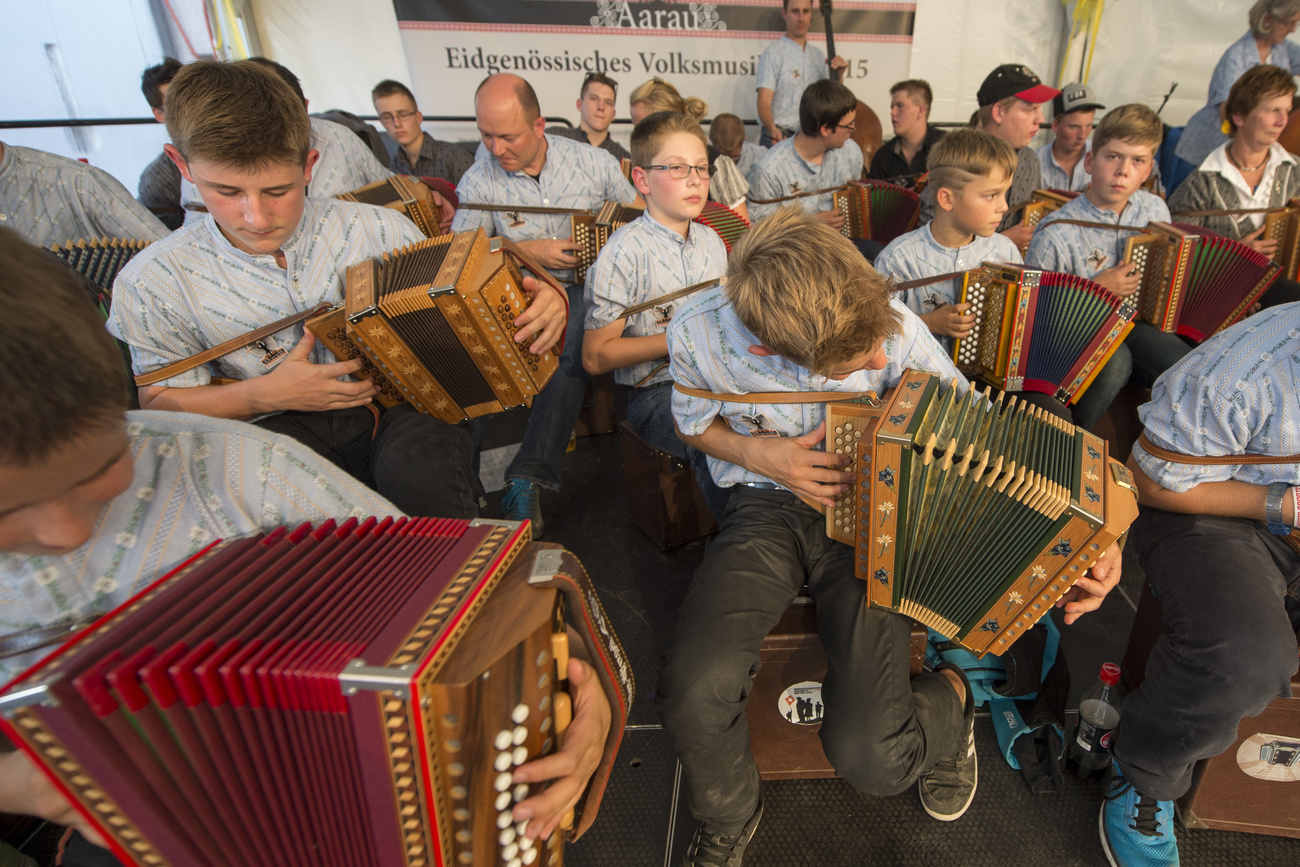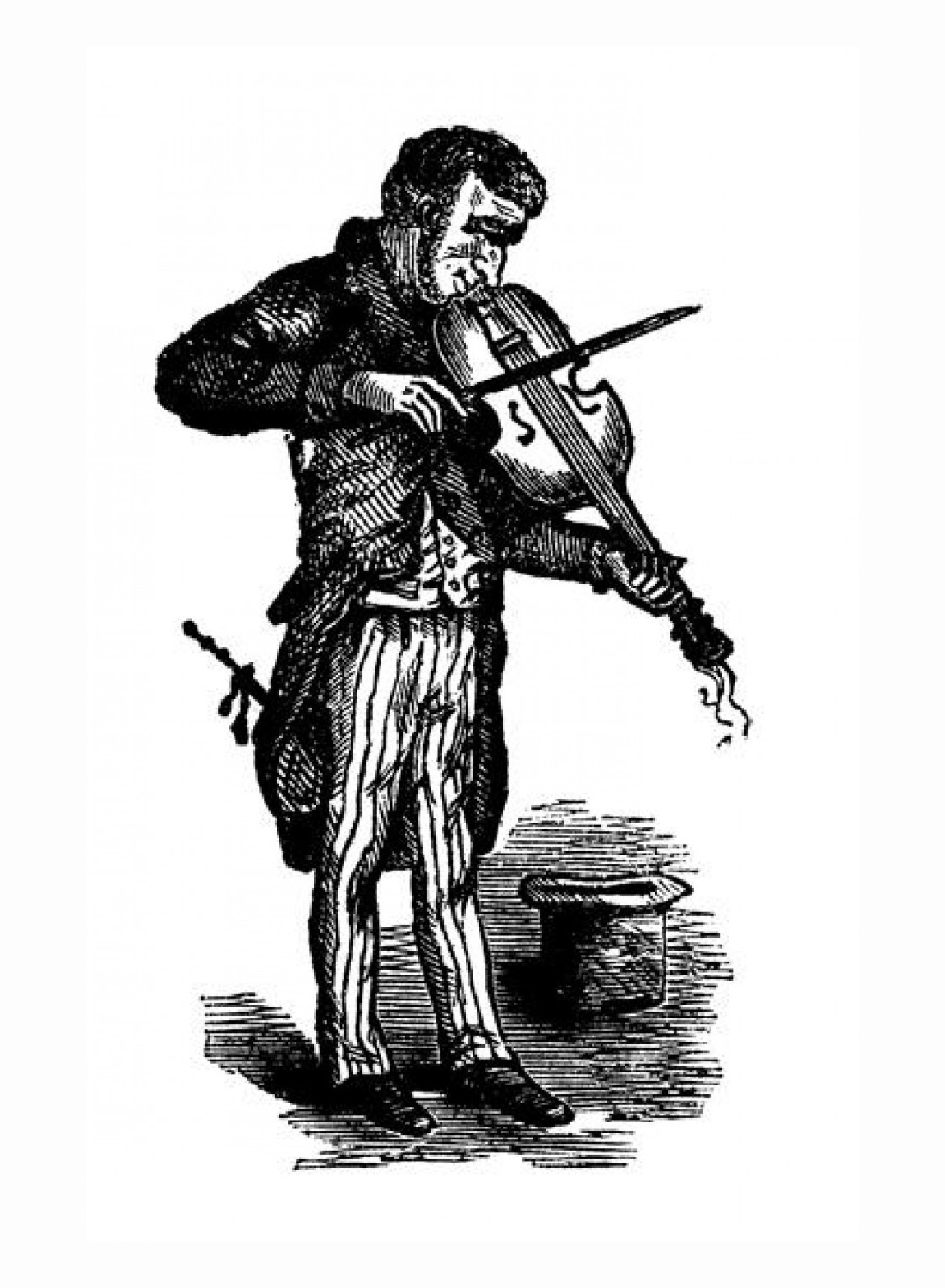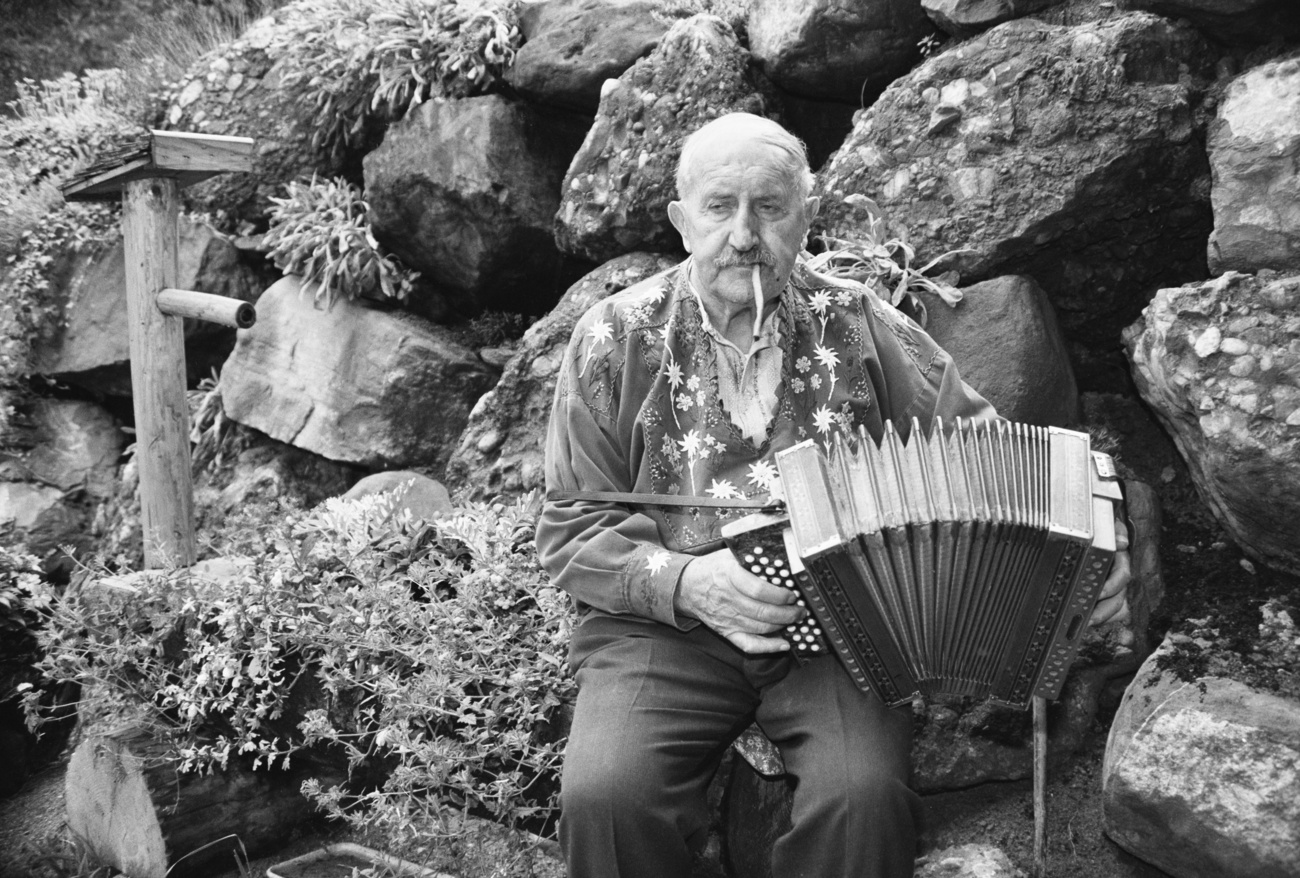The myth of Swiss folk music

Swiss folk music is not simply an invention of people living in the idyllic mountain Alps, but it is a construct of different influences from the city and abroad. That is precisely what makes it so “Swiss”.
Where does Swiss folk music come from? The kinds of musicians who inspired Swiss folk music is varied, writes the Historical Dictionary of SwitzerlandExternal link. Travelling artists, drummers, pipers, and musicians who wrote music to be played from the top of a towers all inspired and played Swiss folk music. Historical accounts show that folk music was influenced by music from other regions or even other countries. Wars over the last centuries brought with it new instruments to Switzerland.
For events such as during cantonal assemblies, marching bands play music that dates back to the time of the mercenaries. Drummers and pipers were particularly popular during the Italian wars in the 16th century. Bagpipes were also used in the army in the past. The bagpipe instrument came to western Switzerland from France around 1610 and became known in Ticino as the “zampogna”.
Folk music influenced by travelling groups
Graubünden folk music was imported to the region by people from lower classes. It was Yenish travellers, also known as gypsies, who brought with them different styles of music from other countries.

At that time, the music was not called country music but instead was named “Seppli-Musik” or “Fränzli-Musik”. This distinction made between the two types was noted by the composition of the instruments in the beginning: there were one or two violins, a clarinet and a small double bass, or sometimes a trumpet and a dulcimer.

Around 1900, many people moved from the mountains to the cities and brought their music with them. At that time the “Schwyzerörgeli”, a type of diatonic button accordion, became more popular and gradually replaced the violin.
Popularity of the “Schwyzerörgeli
Around 50 years after the production of the handheld “Langnauerli” harmonica, the first Swiss accordion, “Schwyzerörgeli” was produced in Pfäffikon in canton Schwyz.

The “Schwyzerörgeli” became known to a wider public during WWI. Soldiers who were sent to the border regions were typically stuck there for months. Many of these soldiers brought their “Schwyzerörgeli” with them. In this way, the “Schwyzerörgeli” became a way to pass the time.
The Swiss countryside accordion made popular by the city
The Schwyzerörgeli, the Swiss accordion, represents the identity of Switzerland. The origin of this instrument is not entirely clear. First mention of the Swiss accorion dates back to 1829.
A Viennese organ and piano builder was granted a patent for an “accordion” on May 23, 1829. It became so popular “that one can hear the chord-like sounds in the streets and promenades everywhere, especially in the evening hours”, wrote the Vienna Theatre-Zeitung newspaper on October 11, 1834.
Seven years later, the first handheld harmonica was made in Langnau in the Emmental region in canton Bern. It was given the nickname the “Langnauerli”.

The handheld “Langnauerli” harmonica was mainly popular with the lower classes as it was easy to use: it only had two bass keys and nine melody keys and was also an inexpensive instrument.
Emergence of Swiss folk music
The term “Ländlermusik” or Swiss folk music and its association with the “Schwyzerörgeli” are therefore not as long-established as one might think. The music became popular primarily due to city dwellers with their “romanticised” idea of the country.
The city dwellers of Zurich in particular took a liking to Swiss folk music in the 1920s. It was in Zurich at this time that the term “Ländlermusik” became established. For those living in the city, it was beautiful country music that they could dance to.

In compliance with the JTI standards
More: SWI swissinfo.ch certified by the Journalism Trust Initiative








You can find an overview of ongoing debates with our journalists here . Please join us!
If you want to start a conversation about a topic raised in this article or want to report factual errors, email us at english@swissinfo.ch.